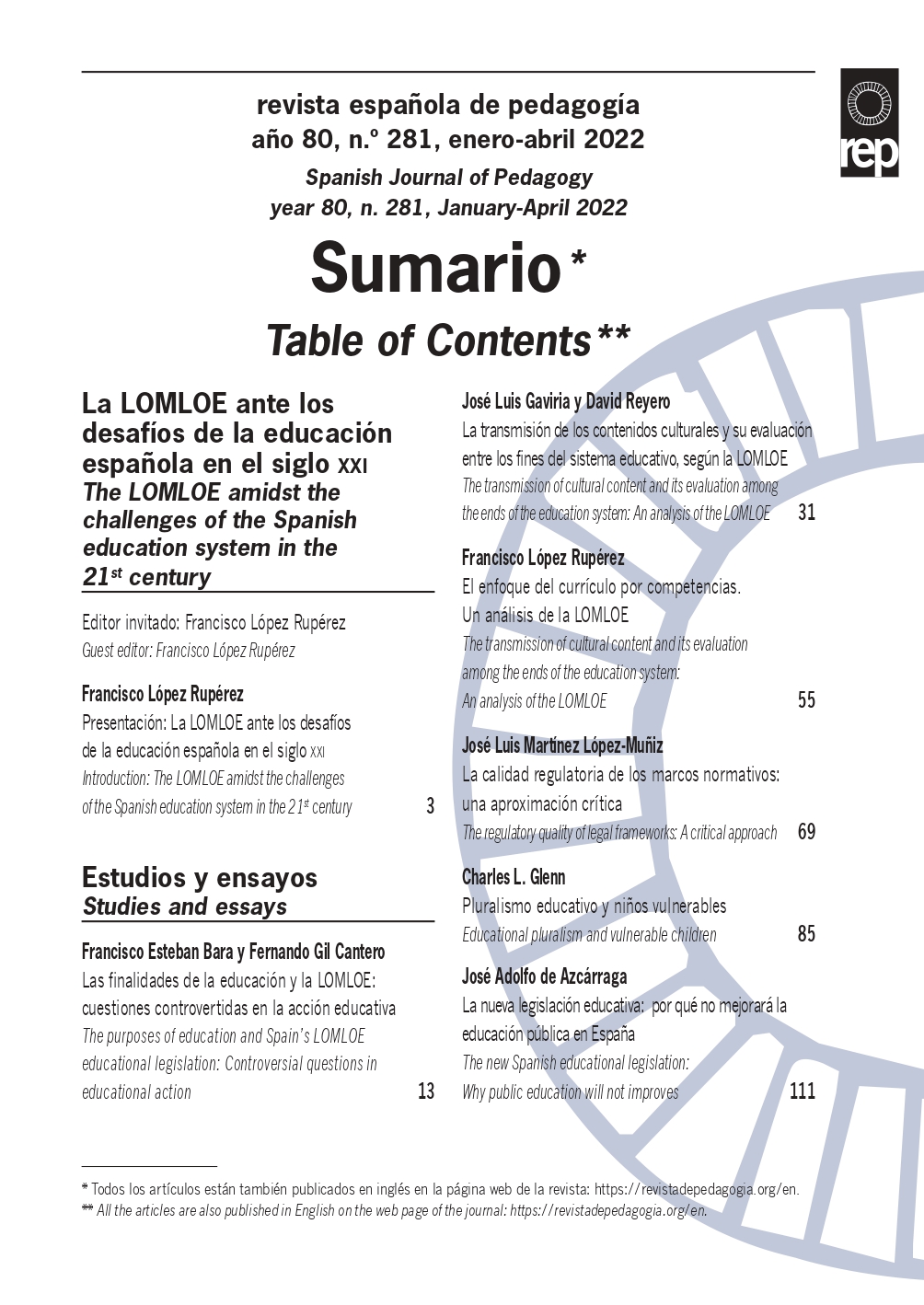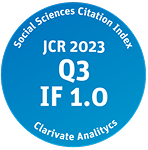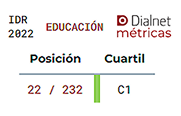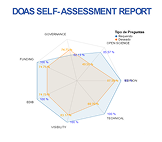An economic evaluation of educational interventions in the LOMLOE: Proposals for improvement with Artificial Intelligence.
DOI:
https://doi.org/10.22550/REP80-1-2022-09Keywords:
Public policy analysis, Machine Learning, educational efficiency, LOMLOEAbstract
This research aims to demonstrate the need for an economic evaluation of the Organic Law 3/2020, of 29 December, which amends Organic Law 2/2006, of 3 May, on Education (LOMLOE), especially after the investment of EU Next Generation funds that open new opportunities that were lacking in the initial drafting of the law. The challenge for Public Administrations is to use this additional investment efficiently. Our analysis shows that artificial intelligence models can predict whether educational support programmes will help increase the likelihood that students who lag behind will pass the 4th grade of ESO. In this way, we can calculate the social return of these programmes and contribute to their ex-ante design to achieve higher success rates for students. To complement the models already used by public administrations, we use robust Machine Learning (ML) models such as CHAID decision trees and artificial neural networks to analyse the characteristics of the groups of students and the intervention they have been part of. The conclusions allow us to improve educational reinforcement programmes in the coming years to support students with lower chances of academic success.
Downloads
References
Aad, G., Abbott, B., Abdallah, J., Abdelalim, A. A., Abdesselam, A., Abdinov, O., Abi, B., Abolins, M., Abramowicz, H., Abreu, H., Acerbi, E., Acharya, B. S., Adams, D. L., Addy, T. N., Adelman, J., Aderholz, M., Adomeit, S., Adragna, P., Adye, T., … Zwalinski, L. (2012). Performance of missing transverse momentum reconstruction in proton-proton collisions at√s = 7 TeV with atlas [Rendimiento de la reconstrucción del momento transversal perdido en colisiones protón-protón en√s = 7 TeV con atlas]. European Physical Journal C, 72 (1), 1-35. https://doi.org/10.1140/epjc/s10052-011-1844-6
Akin, M., Eyduran, E. y Reed, B. M. (2017). Use of RSM and CHAID data mining algorithm for predicting mineral nutrition of hazelnut [Uso del algoritmo de minería de datos RSM y CHAID para predecir la nutrición mineral de la avellana]. Plant Cell, Tissue and Organ Culture (PCTOC), 128 (2), 303-316.
Ballestar, M. T., Doncel, L. M., Sainz, J. y Ortigosa-Blanch, A. (2019). A novel machine learning approach for evaluation of public policies: An application in relation to the performance of university researchers [Un novedoso enfoque de aprendizaje automático para la evaluación de políticas públicas: una aplicación en relación con el rendimiento de los investigadores universitarios]. Technological Forecasting and Social Change, 149. https://doi.org/10.1016/j.techfore.2019.119756
Ballestar, M. T., García-Lázaro, A. y Sainz, J. (2020). Todos los caminos llevan a la educación: un primer análisis de la robotización, la educación y el empleo. Papeles de Economía Española, 166, 33-49.
Ballestar, M. T., Garcia-Lazaro, A., Sainz, J. y Sanz, I. (2022). Why is your company not robotic? The technology and human capital needed by firms to become robotic [¿Por qué su empresa no está robotizada? La tecnología y el capital humano que necesitan las empresas para robotizarse]. Journal of Business Research, 142, 328-343. https://doi.org/10.1016/j.jbusres.2021.12.061
Ballestar, M. T., Grau-Carles, P. y Sainz, J. (2018). Customer segmentation in e-commerce: Applications to the cashback business model [Segmentación de clientes en el comercio electrónico: Aplicaciones al modelo de negocio del cashback]. Journal of Business Research, 88, 407-414. https://doi.org/10.1016/j.jbusres.2017.11.047
Brunello, G. y de Paola, M. (2014). The costs of early school leaving in Europe [Los costes del abandono escolar en Europa]. IZA Journal of Labor Policy, 3 (1), 1-31. https://doi.org/10.1186/2193-9004-3-22
Burgess, S. (16 de junio de 2020). How we should deal with the lockdown learning loss in England’s schools [Cómo debemos afrontar la pérdida de aprendizaje en las escuelas de Inglaterra]. VOX Cepr Policy Portal. https://bit.ly/3Eom12M
Chassignol, M., Khoroshavin, A., Klimova, A. y Bilyatdinova, A. (2018). Artificial intelligence trends in education: A narrative overview [Tendencias de la inteligencia artificial en la educación: una visión general]. Procedia Computer Science, 136, 16-24. https://doi.org/10.1016/j.procs.2018.08.233
Chatterjee, S. y Bhattacharjee, K. K. (2020). Adoption of artificial intelligence in higher education: A quantitative analysis using structural equation modelling [Adopción de la inteligencia artificial en la enseñanza superior: un análisis cuantitativo mediante un modelo de ecuaciones estructurales]. Education and Information Technologies, 25 (5), 3443-3463. https://doi.org/10.1007/s10639-020-10159-7
Crescenzi, R., Giua, M. y Sonzogno, G. V. (2021). Mind the Covid-19 crisis: An evidence-based implementation of Next Generation EU. Journal of Policy Modeling, 43 (2), 278-297. https://doi.org/10.1016/J.JPOLMOD.2021.03.002
Cruz-Jesús, F., Castelli, M., Oliveira, T., Mendes, R., Nunes, C., Sa-Velho, M. y Rosa-Louro, A. (2020). Using artificial intelligence methods to assess academic achievement in public high schools of a European Union country. Heliyon, 6 (6), E04081. https://doi.org/10.1016/j.heliyon.2020.e04081
De la Fuente, A., & Jimeno, J. F. (2009). The private and fiscal returns to schooling in the European Union [Los rendimientos privados y fiscales de la escolarización en la Unión Europea]. Journal of the European Economic Association, 7 (6), 1319-1360. https://doi.org/10.1162/JEEA.2009.7.6.1319
Doncel, L. M., Durá, P., Grau, P. y Sainz, J. (2014). Fiscal sustainability and immigration in the Madrid region [Sostenibilidad fiscal e inmigración en la Comunidad de Madrid]. International Migration, 52 (6), 180-196. https://doi.org/10.1111/imig.12004
Dželihodžić, A. y Jonko, D. (2016). Comparison of ensemble classification techniques and single classifiers performance for customer credit assessment [Comparación de las técnicas de clasificación por conjuntos y el rendimiento de los clasificadores individuales para la evaluación del crédito de los clientes]. Modeling of Artificial Intelligence, 3, 140-150.
European Commission (2010). EUROPE 2020: A strategy for smart, sustainable and inclusive growth [EUROPA 2020: Una estrategia para un crecimiento inteligente, sostenible e integrador]. http://eur-lex.europa.eu/LexUriServ/LexUriServ.do?uri=COM:2010:2020:FIN:EN:PDF
Golden, G. (2020). Education policy evaluation: Surveying the OECD landscape [Evaluación de la política educativa: un estudio del panorama de la OCDE]. OECD Education Working Papers, 236. OECD Publishing. https://www.oecd-ilibrary.org/education/education-policy-evaluation_9f127490-en
Goos, M., Manning, A. y Salomons, A. (2009). Job polarization in Europe [Polarización del empleo en Europa]. American Economic Review, 99 (2), 58-63. https://doi.org/10.1257/aer.99.2.58
Gouëdard, P., Pont, B. y Viennet, R. (2020). Education responses to COVID-19: Implementing a way forward. OECD Education Working Papers, 224. OECD Publishing. https://doi.org/10.1787/8e95f977-en
Gregory, T., Salomons, A. y Zierahn, U. (2019). Racing With or Against the Machine ? Evidence from Europe. IZA Institute of Labor Economics, 2019 (12063).
Hosmer Jr., D. W., Lemeshow, S. y Sturdivant, R. X. (2013). Applied logistic regression [Regresión logística aplicada]. John Wiley & Sons.
Kass, G. V. (1980). An exploratory technique for investigating large quantities of categorical data [Una técnica exploratoria para investigar grandes cantidades de datos categóricos]. Journal of the Royal Statistical Society: Series C (Applied Statistics), 29 (2), 119-127. https://doi.org/10.2307/2986296
Khosravi, P., Kazemi, E., Zhan, Q., Malmsten, J. E., Toschi, M., Zisimopoulos, P., Sigaras, A., Lavery, S., Cooper, L. A. D. y Hickman, C. (2019). Deep learning enables robust assessment and selection of human blastocysts after in vitro fertilization [El aprendizaje profundo permite evaluar y seleccionar de forma robusta los blastocistos humanos tras la fecundación in vitro]. NPJ Digital Medicine, 2 (1), 1-9.
Kraft, M. (20 de agosto de 2015). What If Every Struggling Student Had a Tutor? [¿Y si todos los estudiantes con dificultades tuvieran un tutor?] Education Week. https://www.edweek.org/education/opinion-what-if-every-strugglingstudent-had-a-tutor/2015/08
Ley Orgánica 10/2002, de 23 de diciembre, de Calidad de la Educación (LOCE). Boletín Oficial del Estado, 307, de 24 de diciembre de 2002, páginas 45188 a 45220. https://www.boe.es/eli/es/lo/2002/12/23/10
Ley Orgánica 2/2006, de 3 de mayo de Educación (LOE). Boletín Oficial del Estado, 106. https://www.boe.es/eli/es/lo/2006/05/03/2/con
Ley Orgánica 8/2013, de 9 de diciembre, para la Mejora de la Calidad Educativa (LOMCE). Boletín Oficial del Estado, 295, páginas 97858 a 97921. https://www.boe.es/eli/es/lo/2013/12/09/8
Ley Orgánica 3/2020, de 29 de diciembre, por la que se modifica la Ley Orgánica 2/2006, de 3 de mayo, de Educación (LOMLOE). Boletín Oficial del Estado, 340, de 30 de diciembre de 2020, páginas 122868 a 122953. https://www.boe.es/eli/es/lo/2020/12/29/3
Li, Z., & Eastman, J. R. (2006). Commitment and typicality measurements for fuzzy ARTMAP neural network [Medidas de compromiso y tipicidad para la red neuronal difusa ARTMAP]. Geoinformatics 2006: Geospatial Information Science, 6420. https://doi.org/10.1117/12.712998
Maimon, O. y Rokach, L. (2005). Data mining and knowledge discovery handbook [Manual de minería de datos y descubrimiento de conocimientos]. Springer.
Nickow, A., Oreopoulos, P. y Quan, V. (2020). The impressive effects of tutoring on prek-12 learning: A systematic review and meta-analysis of the experimental evidence [Los impresionantes efectos de la tutoría en el aprendizaje de preescolar a 12 años: una revisión sistemática y un meta-análisis de las pruebas experimentales]. National Bureau of Economic Research Working Papers Series, 27476. https://doi.org/10.3386/w27476
OECD. (2018). Education policy outlook 2018: Putting student learning at the centre [Perspectivas de la política educativa 2018: Poner el aprendizaje de los estudiantes en el centro]. OECD.
Paliwal, M. y Kumar, U. A. (2009). Neural networks and statistical techniques: A review of applications [Redes neuronales y técnicas estadísticas: una revisión de las aplicaciones]. Expert Systems with Applications, 36 (1), 2-17.
Pont, B. y Montt, G. (2014). Education policy outlook. Spain [Perspectivas de la política educativa. España]. OECD.
Porte, C. de la y Jensen, M. D. (2021). The next generation EU: An analysis of the dimensions of conflict behind the deal [La UE de nueva generación: un análisis de las dimensiones del conflicto tras el acuerdo]. Social Policy & Administration, 55 (2), 388-402. https://doi.org/10.1111/SPOL.12709
Ramaswami, M. y Bhaskaran, R. (2010). A CHAID based performance prediction model in educational data mining. International Journal of Computer Science, 7 (1), 10-18.
Saltelli, A., Tarantola, S., Campolongo, F. y Ratto, M. (2004). Sensitivity analysis in practice: a guide to assessing scientific models (Vol. 1). Wiley Online Library.
Schleicher, A. (2020). The impact of COVID-19 on education: Insights from education at a glance 2020 [El impacto de COVID-19 en la educación: visión de la educación en un vistazo 2020]. OECD Journal: Economic Studies. https://www.oecd.org/education/the-impact-of-covid-19-on-education-insights-education-at-a-glance-2020.pdf
Slavin, R. E. (2016). Evidence-based education policies: Transforming educational practice and research [Políticas educativas basadas en la evidencia: transformar la práctica y la investigación educativas]. Educational Researcher, 31 (7), 15-21. https://doi.org/10.3102/0013189X031007015
Wolszczak-Derlacz, J. y Parteka, A. (2011). Efficiency of European public higher education institutions: A two-stage multicountry approach [Eficiencia de las instituciones públicas europeas de enseñanza superior: un enfoque multinacional en dos fases]. Scientometrics, 89 (3), 887- 917. https://doi.org/10.1007/s11192-011-0484-9
Yin, L., Ge, Y., Xiao, K., Wang, X. y Quan, X. (2013). Feature selection for high-dimensional imbalanced data [Selección de características para datos desequilibrados de alta dimensión]. Neurocomputing, 105, 3-11.
Yusuf, A. (2007). Standard-setting at UNESCO: Conventions, recommendations, declarations and charters adopted by UNESCO, 1948-2006 (Vol. 2) [La elaboración de normas en la UNESCO: Convenciones, recomendaciones, declaraciones y cartas adoptadas por la UNESCO, 1948- 2006 (Vol. 2)]. Martinus Nijhoff Publishers.
Downloads
Published
-
Abstract162
-
PDF (Español)26
-
PDF25
How to Cite
Issue
Section
License

This work is licensed under a Creative Commons Attribution-NonCommercial 4.0 International License.

